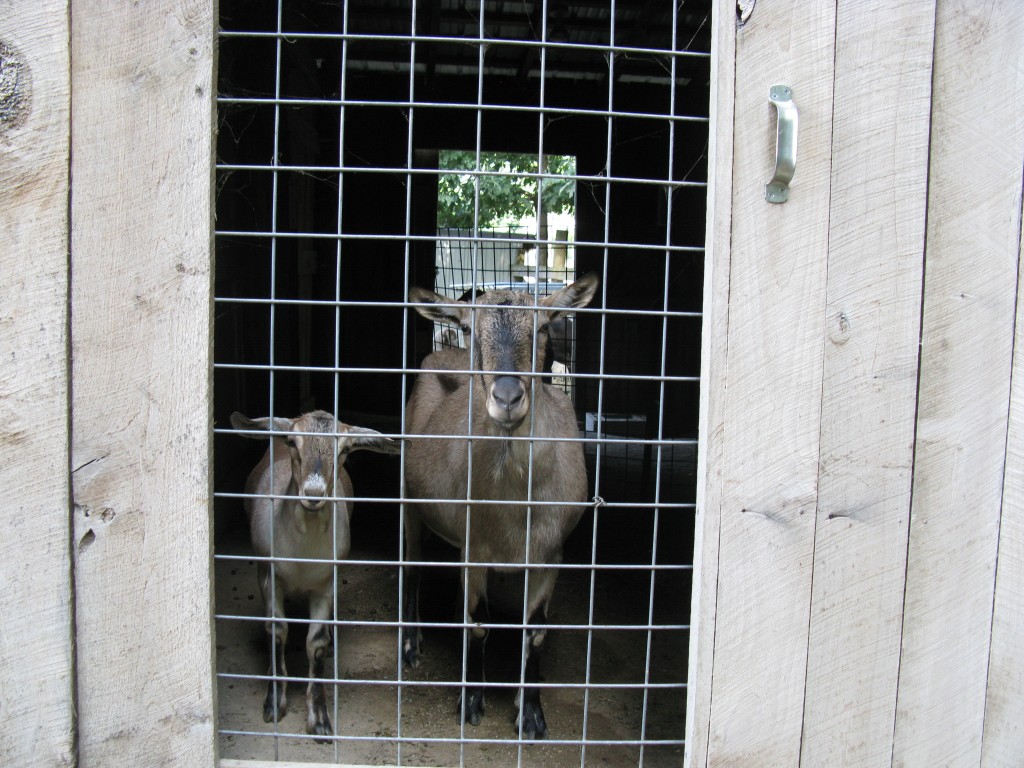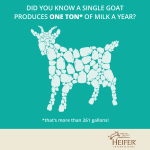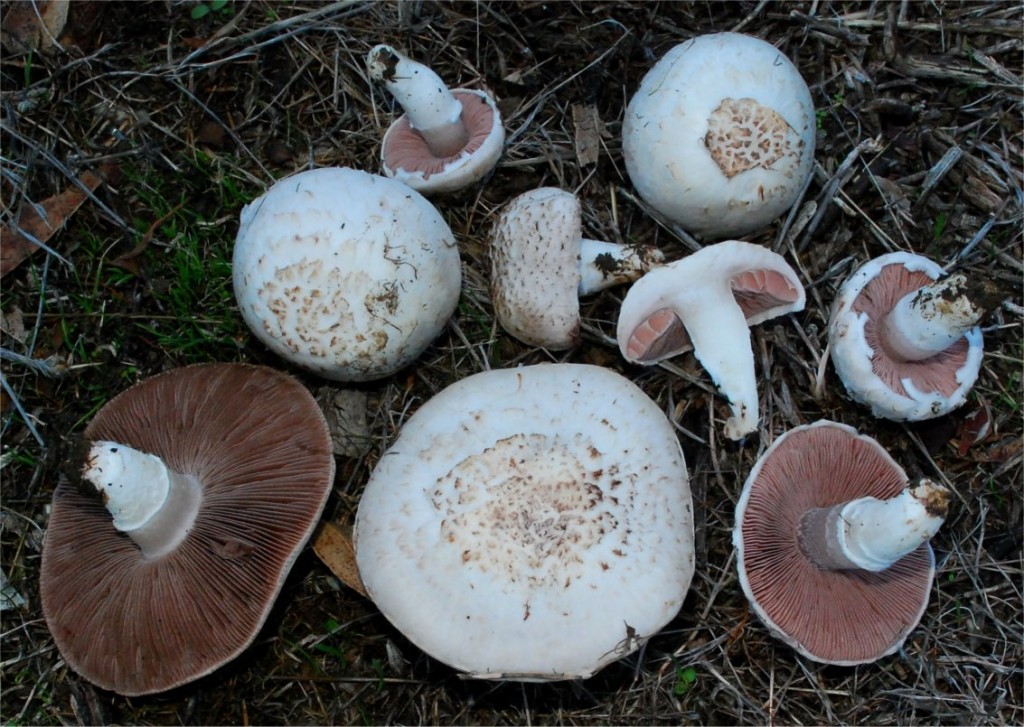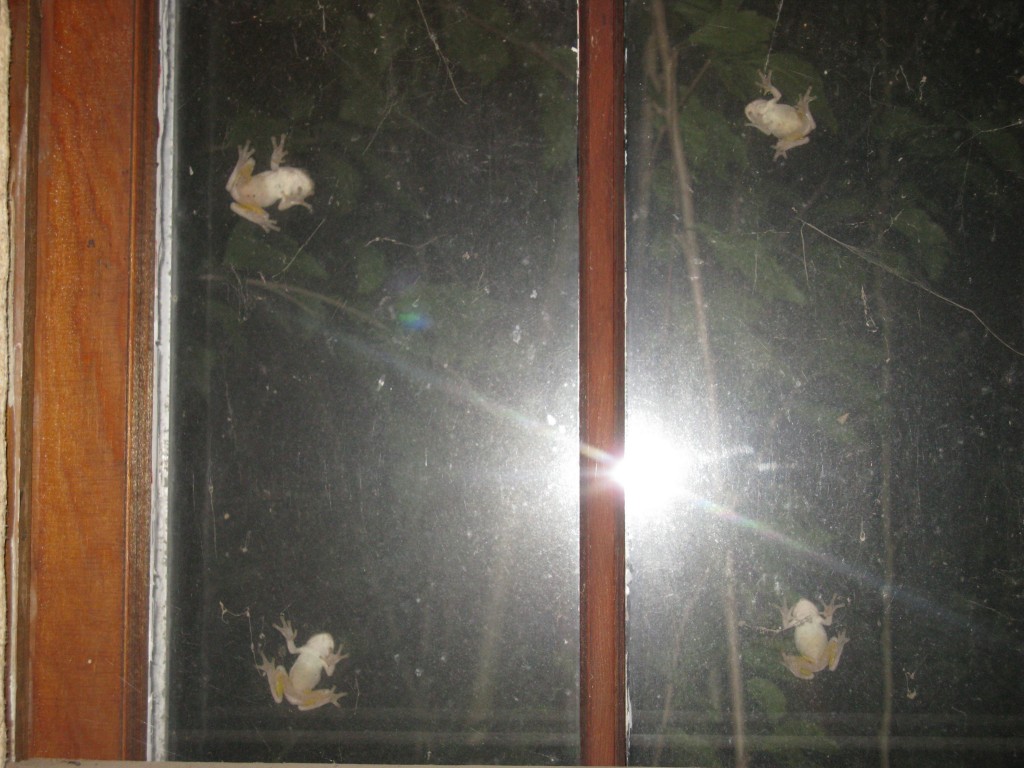I have always loved goat milk and cheese. When I was finally able to raise my own goats, I began scouring the literature for information on milking goats. As you can imagine, there isn’t one accepted way to produce good milk and cheese. Therefore, I decided to use this blog to say a few words about my own experience milking my Alpine goat, Fanny, for about three years.
Fanny is more than four years removed from kidding after her first freshening. At the moment, she is still producing about one-half gallon of milk per day. I never pasteurize the milk, or sterilize my milking container, which is a half-moon stainless steel bucket. I like the half-moon design because it keeps particulates out of the milk. After each milking, the milk is filtered into glass jars with a stainless steel funnel, precooled to ~45 F within 1 hr (jar placed in ice bath in freezer at 0 F) and then refrigerated. It usually lasts about two weeks at 37 F.
Although some goat people milk in the aisles of their barn with no restraint, I decided to build a wooden platform with a stanchion. It is housed in a small room with a wooden floor in one of our barns. Before I begin milking, I thoroughly wash the udder and my hands with Wipe Out Diary Wipes. I like using the wipes because you can eliminate the step of drying the udder. I have never shaved the udder, or used any other products to clean the udder. I direct the first few streams of milk into a strip cup to check for any unusual texture, which might indicate mastitis. Every two weeks or so, I also test for mastitis either with the California Mastitis Kit, or with a simple color indicator. When I am finished milking, I spray the opening in the teats with Fight Bac, a chlorhexidine gluconate antibacterial (common scrub in hospitals). The spray also contains glycerine, which is added to help control any chapping, or irritation of the teats. I prefer the spray over a teat dip, which easily becomes contaminated with hair and other stuff. Since I started milking I have never had any problems with contaminated milk, or mastitis.
I have to mention something about feeding Fanny during milking, and her unusual eating habits. I feed her Purina’s Noble Goat Dairy Parlor (16% protein in pellet form). She just gobbles her food, which is the reason I switched from sweet feed to pellets. In her case, you also have to add a little water with each serving to prevent choke. I add the food to her feeding tray in increments of about two handfuls. When she finishes each batch she starts this dancing routine and looks back at me as if to say, “Give me more”! If you try to milk without providing the food you run the risk of her kicking the milking bucket and creating a big mess. I have read about ways to restrain her back legs but it’s just not worth it. At the moment, I am only milking one goat which takes me about 15 minutes from start to finish.
So there you have it! Milking a goat is fun and you can easily produce high quality milk and cheese without a big time investment. Goat milk also makes a wonderful yogurt. I was finally able to find a simple yogurt maker (Euro Cuisine) that holds seven 6-ounce glass jars.
In my next goat blog, I will talk about my experiences with parasite control, the number one problem facing meat and diary production worldwide. Stay tuned!




